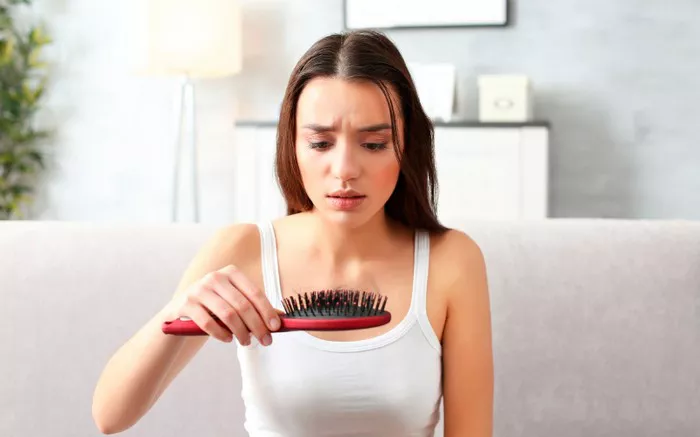Post-pregnancy hair loss is a common experience for many women. Often surprising and concerning, it can lead to questions about when it starts, why it happens, and how to manage it. This article explores the timeline of post-pregnancy hair loss, its causes, and practical tips for coping with this natural process.
The journey of pregnancy brings many physical changes, and hair is no exception. Many women notice a thicker, more vibrant mane during pregnancy due to hormonal changes. However, this is often followed by hair loss after childbirth, commonly referred to as postpartum hair loss. Understanding this phenomenon can help alleviate concerns and empower women to embrace their changing bodies.
What Is Post-Pregnancy Hair Loss?
Post-pregnancy hair loss is a temporary condition that many women experience after giving birth. During pregnancy, elevated levels of hormones, particularly estrogen, prolong the hair growth phase, leading to thicker hair. After delivery, hormone levels drop, which can trigger hair follicles to enter the shedding phase, resulting in noticeable hair loss.
The Hair Growth Cycle
To understand post-pregnancy hair loss, it’s essential to grasp the hair growth cycle, which consists of three main phases:
Anagen Phase: The growth phase where hair follicles are active, lasting several years.
Catagen Phase: The transitional phase lasting a few weeks when hair growth slows down.
Telogen Phase: The resting phase where hair falls out, lasting around three months.
During pregnancy, the extended anagen phase leads to thicker hair, while the postpartum period often sees a sudden increase in the number of hairs transitioning to the telogen phase.
When Does Post-Pregnancy Hair Loss Start?
Timeline of Postpartum Hair Loss
Immediate After Birth: Many women notice a fuller head of hair during pregnancy due to hormonal changes. After delivery, hormonal levels begin to shift dramatically.
Weeks 1-3 Postpartum: Hair loss typically begins about one to three months after giving birth. This timing coincides with the drop in estrogen levels and the return of the hair growth cycle to its normal rhythm.
Peak Shedding: The peak of hair loss often occurs around three to six months postpartum. During this time, many women may notice clumps of hair in the shower drain or on their brushes.
After Six Months: While shedding can be alarming, most women find that hair loss stabilizes after about six months. The majority of women see a return to normal hair growth within a year.
Factors Affecting Hair Loss Timeline
Genetics: Family history can play a role in how pronounced postpartum hair loss will be.
Pregnancy Complications: Conditions such as gestational diabetes or high blood pressure may affect hair loss patterns.
Stress Levels: Emotional and physical stress can exacerbate hair loss, prolonging the shedding phase.
Causes of Post-Pregnancy Hair Loss
Understanding the causes behind postpartum hair loss can help normalize the experience and guide effective management strategies.
1. Hormonal Changes
The most significant factor in postpartum hair loss is hormonal fluctuations. After delivery, estrogen and progesterone levels drop, which can trigger hair follicles to enter the telogen phase prematurely.
2. Nutritional Deficiencies
Pregnancy can deplete essential nutrients, leading to deficiencies that contribute to hair loss. Common deficiencies include:
Iron: Essential for healthy hair growth, low iron levels can lead to increased shedding.
Zinc: Important for hair tissue growth and repair, a lack of zinc can weaken hair.
Vitamins: Vitamins like B12, D, and biotin play crucial roles in hair health.
3. Stress and Fatigue
The postpartum period can be physically and emotionally exhausting. Stress and lack of sleep can trigger hair loss, as they disrupt the normal hair growth cycle.
4. Medical Conditions
Certain medical conditions, such as thyroid imbalances, can exacerbate hair loss after pregnancy. Women should consult healthcare providers if they experience significant changes in hair growth.
How to Manage Post-Pregnancy Hair Loss
While postpartum hair loss can be distressing, there are several strategies women can adopt to manage it effectively:
1. Maintain a Balanced Diet
Eating a nutrient-rich diet can help replenish any deficiencies and support healthy hair growth. Key nutrients to focus on include:
Proteins: Essential for hair structure, including lean meats, fish, eggs, and legumes.
Iron-Rich Foods: Include spinach, beans, and fortified cereals.
Healthy Fats: Omega-3 fatty acids found in fish, nuts, and seeds promote scalp health.
2. Take Supplements
Consulting a healthcare professional about taking prenatal vitamins or hair-specific supplements can be beneficial. Look for products containing:
Biotin: Supports hair and nail health.
Vitamin D: Important for overall health and hair growth.
Iron and Zinc: Essential for maintaining hair health.
3. Practice Stress Management
Finding ways to manage stress can help reduce hair loss. Consider practices such as:
Yoga and Meditation: Both can promote relaxation and overall well-being.
Adequate Sleep: Prioritize rest whenever possible to support recovery and health.
4. Gentle Hair Care
Using gentle hair care practices can minimize additional stress on hair. Consider:
Avoiding Heat Styling: Limit the use of blow dryers, curling irons, and straighteners.
Choosing Gentle Products: Use sulfate-free shampoos and conditioners that nourish hair without harsh chemicals.
Avoiding Tight Hairstyles: Styles that pull on the hair can exacerbate shedding.
5. Consult a Professional
If hair loss persists or worsens, consult a dermatologist or healthcare provider. They can evaluate for underlying conditions and suggest appropriate treatments.
Conclusion
Post-pregnancy hair loss is a natural and common experience for many women, typically starting between one to three months after giving birth. Understanding the causes and timeline can help alleviate concerns and empower women to manage their hair health effectively. With proper care, a balanced diet, and stress management, most women can expect their hair to return to its pre-pregnancy state within a year.
Related topics:
- When Does Menopause Hair Loss Stop? Understanding the Journey
- When Do You Start Losing Hair During Chemo?
- Understanding Male Pattern Baldness: When Does It Start?


